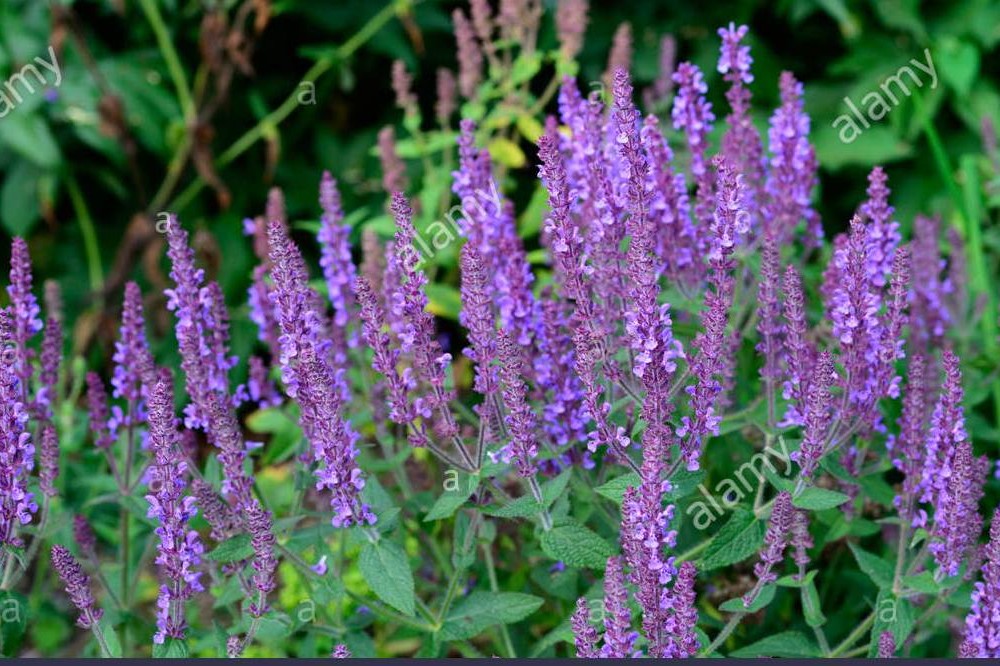Sage
(Salvia virgata)

Description
Salvia amplexicaulis is a herbaceous perennial that is native to southeastern Europe. It is a close relative of Salvia nemorosa. Its specific epithet, amplexicaulis, refers to the "stem-clasping" stem leaves which have no stalks. Violet-blue flowers grow closely together in whorls, forming a nearly continuous spike, with plants reaching up to 90 cm (3.0 ft) tall. Salvia is the largest genus of plants in the sage family Lamiaceae, with nearly 1000 species of shrubs, herbaceous perennials, and annuals. Within the Lamiaceae, Salvia is part of the tribe Mentheae within the subfamily Nepetoideae. One of several genera commonly referred to as sage, it includes two widely used herbs, Salvia officinalis (common sage, or just "sage") and Salvia rosmarinus (rosemary, formerly Rosmarinus officinalis). The genus is distributed throughout the Old World and the Americas (over 900 total species), with three distinct regions of diversity: Central America and South America (approximately 600 species); Central Asia and the Mediterranean (250 species); Eastern Asia (90 species). The name Salvia derives from Latin salvia (sage), from salvus (safe, secure, healthy), an adjective related to salūs (health, well-being, prosperity or salvation), and salvēre (to feel healthy, to heal). Pliny the Elder was the first author known to describe a plant called "Salvia" by the Romans, likely describing the type species for the genus Salvia, Salvia officinalis. Salvia species include annual, biennial, or perennial herbaceous plants, along with woody subshrubs. The stems are typically angled like other members in Lamiaceae. The leaves are typically entire, but sometimes toothed or pinnately divided. The flowering stems bear small bracts, dissimilar to the basal leaves—in some species the bracts are ornamental and showy. The flowers are produced in racemes or panicles, and generally produce a showy display with flower colors ranging from blue to red, with white and yellow less common. The calyx is normally tubular or bell shaped, without bearded throats, and divided into two parts or lips, the upper lip entire or three-toothed, the lower two-cleft. The corollas are often claw shaped and are two-lipped. The upper lip is usually entire or three-toothed. The lower lip typically has two lobes. The stamens are reduced to two short structures with anthers two-celled, the upper cell fertile, and the lower imperfect.
Taxonomic tree:







